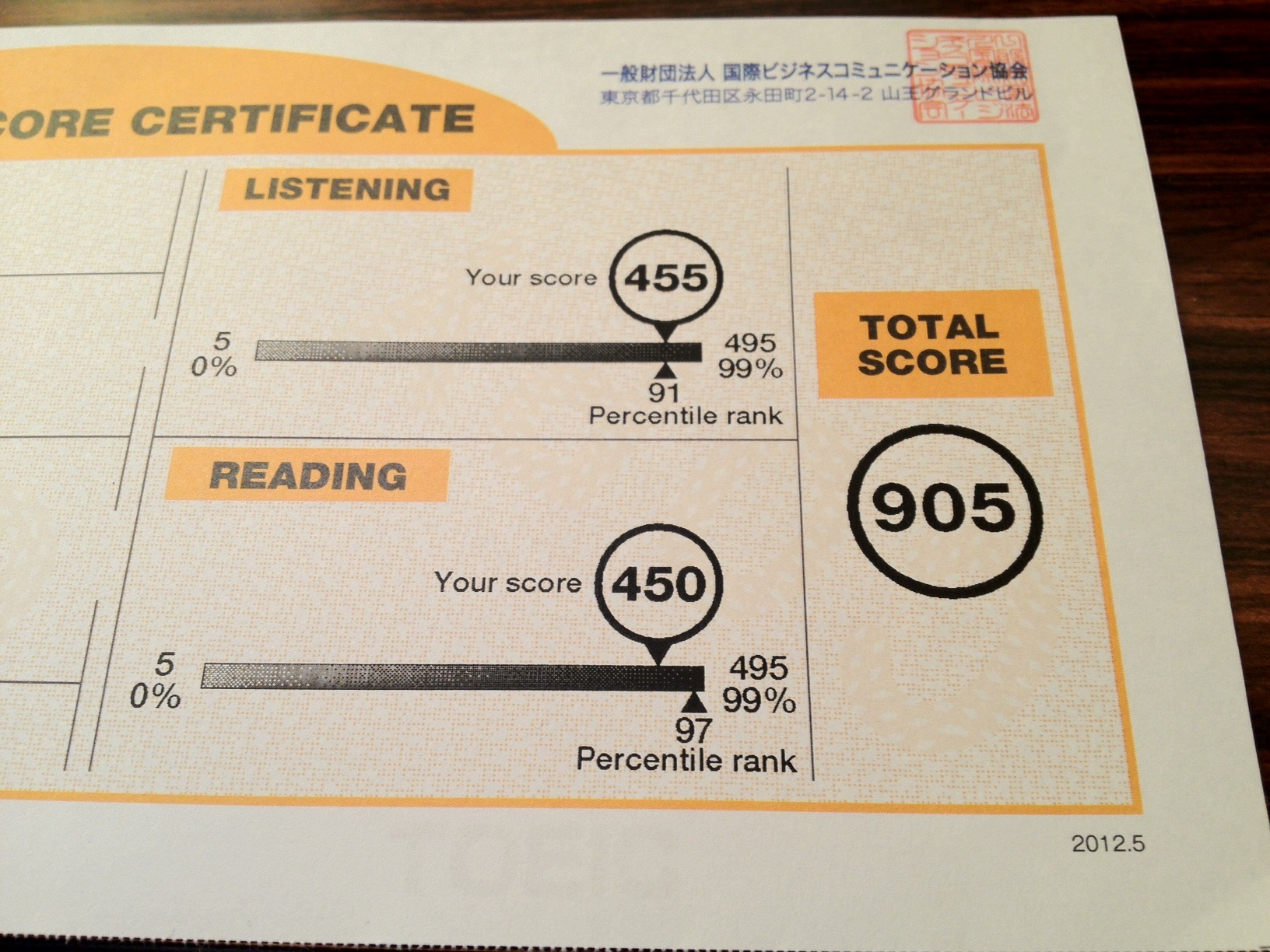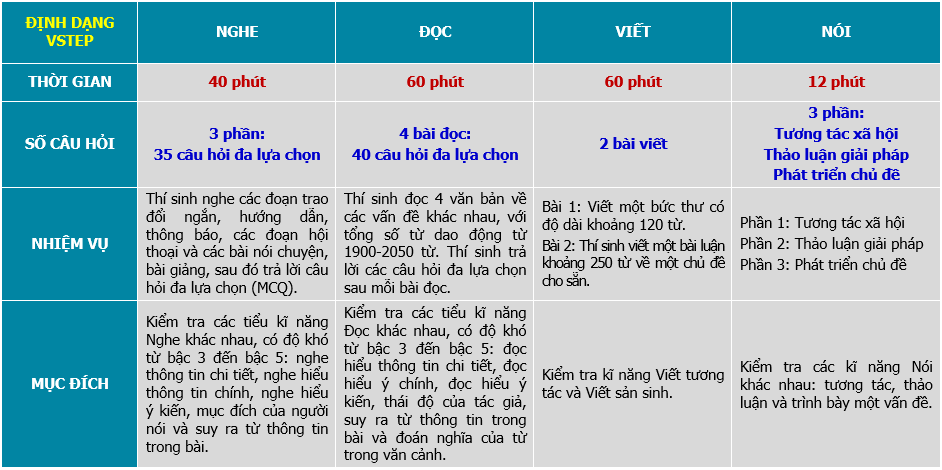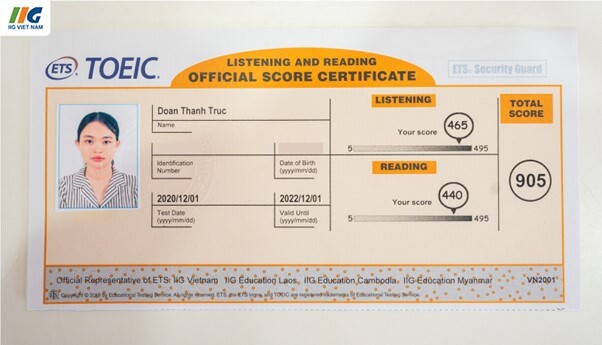未選択
-
Top Hoa Hồng Đẹp Nhất Dành Tặng Ngày Valentine
Ngày Valentine hay còn gọi là Lễ Tình Nhân, là dịp đặc biệt để những cặp đôi bày tỏ tình cảm chân thành dành cho nhau. Và sẽ thật thiếu sót nếu món quà ấy không có sự xuất hiện của hoa hồng – loài hoa được mệnh danh là nữ hoàng của tình yêu. Mỗi màu sắc, mỗi loại hoa hồng lại mang một thông điệp riêng, giúp bạn gửi gắm những lời yêu thương sâu sắc nhất đến người ấy.
Nếu bạn đang băn khoăn không biết nên chọn loại hoa hồng nào để tặng nửa kia trong ngày 14/2 sắp tới, hãy cùng https://litiflorist.com/ khám phá top hoa hồng đẹp nhất dành cho ngày Valentine ngay sau đây.
1. Hoa Hồng Đỏ – Tình Yêu Nồng Cháy, Vĩnh Cửu
Hoa hồng đỏ là biểu tượng kinh điển và mạnh mẽ nhất của tình yêu. Sắc đỏ rực rỡ, nồng nàn của hoa hồng đỏ tượng trưng cho một tình yêu lãng mạn, cháy bỏng và mãnh liệt. Tặng hoa hồng đỏ vào ngày Valentine chính là cách bạn khẳng định tình yêu sâu đậm, chân thành và bất diệt của mình.
-
Ý nghĩa: Tình yêu lãng mạn, sự đam mê, và lòng trân trọng.
-
Lựa chọn hoàn hảo: Dành cho những cặp đôi đã yêu nhau lâu năm, muốn hâm nóng lại tình cảm, hoặc đơn giản là muốn bày tỏ tình yêu sâu sắc và cháy bỏng của mình.
2. Hoa Hồng Kem Dâu – Vẻ Đẹp Ngọt Ngào, Lãng Mạn
Hoa hồng kem dâu (hay còn gọi là hoa hồng kem) mang một vẻ đẹp dịu dàng, ngọt ngào và tinh tế. Màu sắc pha trộn giữa kem và hồng nhạt tạo cảm giác nhẹ nhàng, lãng mạn, rất phù hợp với những cô nàng yêu thích sự thanh lịch. Tặng hoa hồng kem dâu là cách bạn thể hiện sự quan tâm, trân trọng và một tình yêu dịu dàng, e ấp.
-
Ý nghĩa: Sự duyên dáng, ngọt ngào và lòng biết ơn.
-
Lựa chọn hoàn hảo: Dành cho những cặp đôi mới yêu, muốn bày tỏ tình cảm một cách tinh tế, hoặc tặng cho người bạn gái có tính cách nhẹ nhàng, lãng mạn.
- >>> Xem thêm: Các mẫu hoa tặng sinh nhật người yêu đẹp, sang trọng
3. Hoa Hồng Tím – Tình Yêu Chung Thủy, Say Đắm
Hoa hồng tím mang một vẻ đẹp bí ẩn, quyến rũ và đầy lãng mạn. Màu tím tượng trưng cho sự chung thủy, lãng mạn và một tình yêu say đắm, thủy chung. Đây là lựa chọn lý tưởng để bạn bày tỏ rằng tình yêu của mình dành cho người ấy là mãi mãi và không bao giờ thay đổi.
-
Ý nghĩa: Tình yêu chung thủy, sự say đắm và lòng ngưỡng mộ.
-
Lựa chọn hoàn hảo: Dành cho những cặp đôi đã bên nhau một chặng đường dài, muốn khẳng định lòng son sắt, thủy chung của mình.
4. Hoa Hồng Sen Đậm – Vẻ Đẹp Vĩnh Cửu, Hạnh Phúc
Hoa hồng sen đậm (hay hoa hồng Ohara) sở hữu những cánh hoa dày dặn, bung nở rực rỡ với sắc hồng đậm đà, sang trọng. Loài hoa này không chỉ đẹp mà còn mang ý nghĩa đặc biệt về sự trường tồn, hạnh phúc vĩnh cửu. Tặng hoa hồng sen đậm là bạn đang gửi gắm lời chúc về một tình yêu bền vững, hạnh phúc và một tương lai tươi sáng cho cả hai.
-
Ý nghĩa: Hạnh phúc vĩnh cửu, sự trường tồn và lòng biết ơn sâu sắc.
-
Lựa chọn hoàn hảo: Dành cho những ai muốn thể hiện tình yêu bất diệt và mong muốn một mối quan hệ lâu dài, bền chặt.
5. Hoa Hồng Cam – Tình Yêu Nồng Nhiệt, Cuộc Sống Tươi Vui
Hoa hồng cam mang sắc màu rực rỡ của mặt trời, tượng trưng cho một tình yêu nồng nhiệt, đầy sức sống và niềm vui. Tặng hoa hồng cam là cách bạn bày tỏ sự say mê, nhiệt huyết và mong muốn được cùng người ấy khám phá những điều mới mẻ trong cuộc sống.
-
Ý nghĩa: Sự say mê, nhiệt huyết và lòng ngưỡng mộ.
-
Lựa chọn hoàn hảo: Dành cho những cặp đôi yêu thích sự phiêu lưu, khám phá và có một cuộc sống tình cảm tràn đầy năng lượng tích cực.
Gợi Ý Tặng Hoa Valentine Thêm Đặc Biệt
Ngoài việc lựa chọn loại hoa, bạn có thể tham khảo một số gợi ý sau để món quà thêm phần ý nghĩa:
-
Số lượng hoa: Mỗi số lượng hoa hồng mang một thông điệp riêng. Chẳng hạn, 9 bông hồng tượng trưng cho tình yêu vĩnh cửu, 99 bông hồng thể hiện tình yêu bất diệt.
-
Kết hợp với quà tặng khác: Một bó hoa hồng tươi thắm đi kèm một món quà nhỏ như socola, trang sức hay một tấm thiệp viết tay sẽ khiến người ấy bất ngờ và hạnh phúc hơn.
-
Lựa chọn dịch vụ hoa uy tín: Đảm bảo hoa được giao tươi mới, đẹp mắt và đúng hẹn để ngày Valentine thêm trọn vẹn.
Hy vọng với những gợi ý trên, bạn sẽ chọn được bó hoa hồng ưng ý nhất để dành tặng người mình yêu trong ngày Valentine sắp tới. Chắc chắn, món quà này sẽ giúp bạn gửi trọn mọi lời yêu thương và khiến nửa kia cảm thấy hạnh phúc vô bờ bến.
>>> Click để đặt hoa Hồ Chí MinhPR -
-
Hoa Tặng Người Yêu Ngày Kỷ Niệm – Gửi Gắm Tình Yêu Qua Từng Bông Hoa
Ngày kỷ niệm là dịp đặc biệt để cả hai cùng nhìn lại chặng đường đã qua và hâm nóng tình cảm. Tặng một bó hoa tươi thắm không chỉ là món quà truyền thống mà còn là cách tinh tế để bạn bày tỏ những tâm tư, tình cảm sâu sắc nhất của mình. Tuy nhiên, mỗi loài hoa lại mang một thông điệp riêng. Vậy nên tặng hoa gì cho người yêu ngày kỷ niệm để món quà thêm phần ý nghĩa? Hãy cùng https://litiflorist.com/ khám phá ý nghĩa của từng loại hoa để có lựa chọn hoàn hảo nhất.
1. Hoa Hồng – Biểu Tượng Của Tình Yêu Bất Diệt
Khi nhắc đến hoa tặng người yêu, hoa hồng luôn là lựa chọn hàng đầu và phổ biến nhất. Sắc đỏ nồng nàn của hoa hồng đại diện cho một tình yêu lãng mạn, cháy bỏng và vĩnh cửu.
-
Hồng đỏ: Thể hiện tình yêu sâu đậm, chân thành và mãnh liệt. Đây là lựa chọn cổ điển nhưng không bao giờ lỗi thời.
-
Hồng trắng: Tượng trưng cho sự trong sáng, thuần khiết và một tình yêu chân thành, không vụ lợi.
-
Hồng phấn: Mang ý nghĩa của sự dịu dàng, lãng mạn và tình yêu ban đầu e ấp.
-
Hồng cam: Thể hiện sự say mê, nhiệt huyết và mong muốn được ở bên cạnh người ấy.
Đặc biệt, số lượng hoa hồng cũng mang nhiều ý nghĩa:
-
1 bông: Anh mãi mãi chỉ có mình em.
-
9 bông: Tình yêu vĩnh cửu, bền chặt.
-
99 bông: Tình yêu bất diệt, mãi mãi bên nhau.
- >>> Xem thêm: Các mẫu hoa sinh nhật đẹp cho nữ đẹp, sang trọng
2. Hoa Tulip – Lời Hứa Về Một Tương Lai Hạnh Phúc
Hoa Tulip, với vẻ đẹp thanh lịch và kiêu sa, là một lựa chọn tuyệt vời cho ngày kỷ niệm. Loài hoa này mang ý nghĩa của sự trọn vẹn, lời hứa về một tương lai hạnh phúc và sự thấu hiểu lẫn nhau trong tình yêu.
-
Tulip đỏ: Tượng trưng cho tình yêu hoàn hảo, niềm đam mê và sự lãng mạn.
-
Tulip vàng: Đại diện cho ánh nắng mặt trời, niềm vui và sự lạc quan trong tình yêu.
-
Tulip trắng: Thể hiện sự tha thứ và tình yêu thuần khiết.
3. Hoa Cẩm Tú Cầu – Lòng Biết Ơn Sâu Sắc
Hoa Cẩm Tú Cầu, với những chùm hoa tròn đầy, tượng trưng cho lòng biết ơn, sự chân thành và những cảm xúc sâu sắc. Tặng Cẩm Tú Cầu trong ngày kỷ niệm là cách bạn bày tỏ lòng cảm ơn vì đã có người ấy trong đời, trân trọng những khoảnh khắc cả hai đã trải qua cùng nhau.
Loài hoa này còn mang ý nghĩa của sự thấu hiểu và gắn kết, thể hiện một tình yêu bền chặt và thủy chung.
4. Hoa Baby’s Breath (Hoa Baby) – Tình Yêu Vĩnh Cửu, Thuần Khiết
Dù nhỏ bé nhưng hoa Baby’s Breath lại có sức hút đặc biệt. Loài hoa này tượng trưng cho tình yêu thuần khiết, trong sáng và vĩnh cửu. Thường được dùng để kết hợp với các loại hoa khác, hoa Baby’s Breath giúp bó hoa thêm phần lãng mạn và tinh tế. Tặng hoa Baby’s Breath là bạn muốn nói rằng tình yêu của hai bạn luôn trong sáng và không bao giờ phai nhạt theo thời gian.
5. Hoa Hướng Dương – Tình Yêu Chung Thủy, Vững Bền
Hoa Hướng Dương luôn hướng về phía mặt trời, tượng trưng cho lòng chung thủy, sự kiên định và một tình yêu luôn hướng về phía trước. Tặng Hướng Dương là cách bạn khẳng định tình cảm của mình luôn vững vàng, tin tưởng và lạc quan vào tương lai của cả hai. Đây cũng là biểu tượng của niềm tin và hy vọng.
6. Hoa Cúc Tana – Tình Yêu Dịu Dàng, Ngọt Ngào
Cúc Tana hay còn gọi là cúc họa mi, là loài hoa nhỏ nhắn, xinh xắn mang vẻ đẹp mộc mạc, tinh khôi. Hoa Cúc Tana tượng trưng cho tình yêu nhẹ nhàng, ngọt ngào và sự bình yên trong cuộc sống. Bó hoa Cúc Tana sẽ là món quà ý nghĩa dành cho những cặp đôi yêu thích sự đơn giản, lãng mạn.
7. Hoa Lavender – Tình Yêu Chung Thủy, Vĩnh Hằng
Hoa Lavender không chỉ có hương thơm dễ chịu mà còn mang ý nghĩa sâu sắc. Lavender tượng trưng cho sự thủy chung, son sắt và một tình yêu lãng mạn, vĩnh hằng. Món quà này sẽ thể hiện mong muốn được cùng người ấy đi đến cuối cuộc đời.
Cách Chọn Hoa Tặng Người Yêu Ngày Kỷ Niệm
Để chọn được bó hoa ưng ý, bạn nên:
-
Hiểu sở thích của người ấy: Điều quan trọng nhất là chọn loài hoa mà người yêu bạn yêu thích.
-
Cân nhắc ý nghĩa: Dựa vào ý nghĩa của từng loại hoa để gửi gắm thông điệp phù hợp với chặng đường tình yêu của hai bạn.
-
Sáng tạo trong cách tặng: Một bó hoa được kết hợp tinh tế cùng một món quà nhỏ hay một lời nhắn tay sẽ làm món quà thêm phần đặc biệt.
Dù bạn chọn loài hoa nào, điều quan trọng nhất vẫn là tấm lòng chân thành mà bạn muốn gửi gắm. Hy vọng với những gợi ý trên, bạn sẽ chọn được bó hoa ưng ý nhất để kỷ niệm ngày yêu nhau thêm trọn vẹn và đáng nhớ.
>>> Xem thêm: Đặt hoa online Hà Nội -
-
Chiến lược luyện thi TOEIC cho người mất gốc
TOEIC là bài thi đánh giá năng lực tiếng Anh trong môi trường làm việc quốc tế, rất phổ biến trong các công ty, doanh nghiệp và cơ quan tại Việt Nam. Tuy nhiên, với những người “mất gốc” – tức là chưa có nền tảng tiếng Anh vững – thì việc bắt đầu ôn thi TOEIC có thể là một thử thách lớn. Bài viết này sẽ giúp bạn định hướng đúng cách luyện thi TOEIC từ con số 0.
Hiểu rõ mục tiêu điểm số của bản thân
Không phải ai luyện thi TOEIC cũng cần đạt 900 điểm. Tùy theo nhu cầu cá nhân hay yêu cầu tuyển dụng, bạn có thể đặt mục tiêu phù hợp như 450, 550 hay 700 điểm. Việc xác định rõ mục tiêu ngay từ đầu giúp bạn chọn đúng giáo trình, tài liệu và chiến lược học tập. Người mới bắt đầu không nên đặt mục tiêu quá cao trong thời gian ngắn, điều này dễ gây nản chí. Hãy chia nhỏ hành trình của bạn: từ 300 lên 450, rồi 550, và tiếp tục nâng cao sau đó.

>>>TOEIC 4 kỹ năng: https://anhnguthienan.edu.vn/khoa-hoc/luyen-thi-toeic-4-ky-nang/Bắt đầu từ từ vựng và phát âm căn bản
Một trong những rào cản lớn của người mất gốc khi học TOEIC là thiếu vốn từ và không hiểu cách phát âm. Vì vậy, hãy bắt đầu bằng những chủ đề quen thuộc như công việc, giao tiếp nơi công sở, lịch trình, mua sắm, du lịch,… Bạn có thể học từ vựng theo chủ đề kết hợp với nghe phát âm chuẩn từ các ứng dụng như Cambridge Dictionary, YouGlish, hoặc học qua video ngắn. Khi bạn phát âm đúng, bạn cũng sẽ nghe tốt hơn – đây là yếu tố quyết định trong bài Listening TOEIC.
Học nghe TOEIC từ những bài đơn giản
Đừng vội làm các đề thi thật ngay khi bắt đầu luyện nghe TOEIC. Người mới học nên bắt đầu từ những đoạn hội thoại ngắn, có phụ đề và tốc độ vừa phải. Hãy luyện theo các bước: nghe hiểu nội dung, nghe chép chính tả, so sánh và sửa lỗi, cuối cùng là nghe lặp lại nhiều lần để quen âm. Khi đã nghe được các đoạn ngắn, bạn có thể chuyển dần sang các phần Listening trong đề TOEIC Part 1 (hình ảnh) và Part 2 (hỏi – đáp).

Rèn luyện ngữ pháp và kỹ năng đọc hiểu căn bản
TOEIC Reading không chỉ đòi hỏi bạn biết nghĩa của từ mà còn cần hiểu cấu trúc câu, thì, mệnh đề quan hệ, giới từ, trạng từ,... Vì thế, bạn nên học lại ngữ pháp nền tảng theo từng chủ điểm rõ ràng. Một số tài liệu như “Basic Grammar in Use” hoặc các kênh dạy ngữ pháp tiếng Anh trên YouTube có thể giúp bạn nắm lại kiến thức một cách dễ hiểu. Song song đó, hãy luyện đọc các đoạn văn ngắn, từ dễ đến khó, kết hợp với việc làm các bài tập đọc hiểu TOEIC Part 5, 6 và 7.
>>>Cách đăng ký thi TOEIC online: https://anhnguthienan.edu.vn/cach-dang-ky-thi-toeic/Tận dụng khóa học TOEIC online và thi thử định kỳ
Nếu bạn khó tự học, các khóa học TOEIC online là một lựa chọn hợp lý. Hiện nay có nhiều trung tâm cung cấp chương trình học dành riêng cho người mất gốc, có lộ trình rõ ràng, kèm bài giảng, từ vựng và bài tập luyện tập. Ngoài ra, bạn nên thi thử định kỳ mỗi 2 tuần hoặc mỗi tháng để đo tiến độ, quen với áp lực thời gian và cải thiện điểm số từng phần.
Kết luận
Luyện thi TOEIC từ con số 0 không hề dễ, nhưng hoàn toàn khả thi nếu bạn kiên trì, học đúng cách và có chiến lược rõ ràng. Từng bước vững chắc sẽ giúp bạn cải thiện không chỉ điểm số mà còn cả khả năng sử dụng tiếng Anh trong công việc thực tế. Hãy bắt đầu hành trình của bạn ngay hôm nay để đạt được mục tiêu TOEIC mơ ước.
Tham khảo, tư vấn về các khóa học tại anhnguthienan.edu.vn -
Cách làm bài đọc VSTEP hiệu quả cho người mới bắt đầu
Kỹ năng đọc hiểu luôn là một phần không thể thiếu trong bài thi VSTEP. Với đặc điểm gồm các đoạn văn học thuật hoặc gần gũi với đời sống, phần đọc yêu cầu thí sinh không chỉ nắm chắc vốn từ vựng mà còn phải có chiến thuật làm bài thông minh. Trong bài viết này, chúng ta sẽ tìm hiểu cách làm bài đọc VSTEP sao cho tiết kiệm thời gian và đạt kết quả cao nhất.
1. Nắm rõ cấu trúc phần đọc trong bài thi VSTEP
Bài đọc VSTEP (trình độ B1, B2) thường bao gồm từ 3 đến 4 đoạn văn với độ dài và độ khó tăng dần. Mỗi đoạn thường đi kèm khoảng 6–8 câu hỏi, chủ yếu là câu hỏi trắc nghiệm, yêu cầu lựa chọn đáp án đúng nhất. Các câu hỏi thường bao gồm:
-
Tìm ý chính của đoạn văn
-
Xác định từ đồng nghĩa, trái nghĩa trong ngữ cảnh
-
Trả lời chi tiết theo thông tin được nêu trong bài
-
Rút ra suy luận từ nội dung
Việc hiểu cấu trúc trước sẽ giúp bạn phân bổ thời gian hợp lý và không bị bất ngờ khi vào phòng thi.

>>>Ôn thi VSTEP: https://anhnguthienan.edu.vn/khoa-hoc/luyen-thi-vstep/2. Đọc lướt để lấy ý chính trước khi đi vào chi tiết
Một trong những lỗi phổ biến của người mới học là đọc kỹ toàn bộ bài ngay từ đầu, dẫn đến mất thời gian và dễ rối. Thay vào đó, bạn nên áp dụng chiến thuật “Skimming and Scanning” – đọc lướt để nắm ý chính và dò tìm thông tin chi tiết khi cần. Hãy chú ý đến câu đầu tiên và cuối cùng của đoạn – đây thường là nơi chứa thông tin chủ đạo.
3. Xác định từ khóa trong câu hỏi và tìm trong bài
Trước khi đọc kỹ đoạn văn, bạn nên đọc câu hỏi trước. Điều này giúp bạn biết mình cần tìm gì và không bị lạc hướng. Gạch chân từ khóa trong câu hỏi, sau đó quay lại bài đọc và tìm từ khóa hoặc những từ đồng nghĩa với chúng. Đây là cách làm nhanh, chính xác và hiệu quả trong giới hạn thời gian.

4. Tận dụng kỹ năng loại trừ đáp án sai
Trong hầu hết câu hỏi trắc nghiệm, thường sẽ có ít nhất một hoặc hai đáp án “bẫy” – sai hoàn toàn hoặc đúng một phần nhưng không đủ. Bạn nên dùng kỹ năng loại trừ, tìm ra đáp án không hợp lý để tăng cơ hội chọn đúng. Khi phân vân giữa hai đáp án, hãy ưu tiên phương án bám sát nội dung đoạn văn.
5. Không dành quá nhiều thời gian cho một câu hỏi
Thời gian là yếu tố sống còn trong phần đọc. Nếu một câu hỏi khiến bạn mất hơn 1 phút mà vẫn chưa chắc chắn, hãy tạm bỏ qua và làm tiếp câu khác. Sau khi hoàn thành những câu dễ, bạn có thể quay lại xem xét kỹ hơn những câu khó. Cách làm này giúp bạn không bị “kẹt” ở một chỗ quá lâu và bỏ lỡ những điểm số dễ kiếm.
6. Tăng vốn từ vựng và luyện đọc thường xuyên
Để đọc nhanh và hiểu đúng, vốn từ vựng là yếu tố tiên quyết. Bạn nên học từ mới theo cụm và theo chủ đề. Ngoài ra, việc luyện đọc các bài báo tiếng Anh ngắn, truyện ngắn, hoặc tài liệu học thuật cũng là cách hiệu quả để nâng cao kỹ năng. Tích lũy từ vựng một cách chủ động sẽ giúp bạn cải thiện đáng kể tốc độ và độ chính xác khi làm bài.

7. Thực hành bằng đề thi thật và luyện tập theo thời gian thực
Cuối cùng, bạn nên luyện làm đề thi thật hoặc đề mô phỏng chuẩn định dạng VSTEP. Sử dụng đồng hồ bấm giờ để tập phản xạ trong giới hạn thời gian thi. Sau mỗi bài luyện tập, hãy xem lại đáp án và phân tích tại sao mình chọn đúng hoặc sai – điều này sẽ giúp bạn tiến bộ nhanh hơn nhiều.
Kết luận
Để làm tốt phần đọc trong bài thi VSTEP, thí sinh không chỉ cần kiến thức nền vững chắc mà còn phải trang bị cho mình chiến thuật hợp lý và khả năng làm bài thông minh. Hãy luyện tập thường xuyên và kiên nhẫn với từng bài đọc, bạn sẽ dần thấy rõ sự tiến bộ. Nếu bạn đang tìm kiếm một nơi học bài bản và hiệu quả, hãy truy cập ngay: anhnguthienan.edu.vn.
-
-
Tìm hiểu cách đăng ký thi TOEIC online nhanh chóng và tiện lợi
Với xu hướng số hóa ngày càng mạnh mẽ trong lĩnh vực giáo dục, việc đăng ký thi TOEIC không còn giới hạn ở hình thức trực tiếp tại các trung tâm khảo thí. Ngày nay, thí sinh có thể hoàn tất thủ tục đăng ký thi TOEIC chỉ với vài bước đơn giản trên máy tính hoặc điện thoại. Điều này giúp tiết kiệm thời gian, công sức và đặc biệt phù hợp với người bận rộn hoặc ở xa các trung tâm thi. Nếu bạn đang quan tâm đến cách đăng ký thi TOEIC online, hãy theo dõi chi tiết trong bài viết dưới đây để thực hiện đúng quy trình.

1. Những lợi ích khi đăng ký thi TOEIC online
So với phương thức truyền thống, đăng ký TOEIC trực tuyến mang lại rất nhiều lợi ích thiết thực. Trước tiên là sự tiện lợi: bạn không cần phải di chuyển, chờ đợi hoặc xếp hàng. Thay vào đó, chỉ cần vài thao tác cơ bản với thiết bị có kết nối internet, bạn có thể chọn lịch thi, điền thông tin cá nhân và thanh toán lệ phí một cách dễ dàng.
Ngoài ra, hệ thống online cũng giúp bạn kiểm tra nhanh tình trạng đăng ký, xem lại thông tin cá nhân và cập nhật kịp thời các thay đổi về lịch thi nếu có. Việc lưu trữ thông tin trên hệ thống còn giúp quá trình cấp chứng chỉ sau này trở nên thuận tiện và chính xác hơn.
2. Các bước đăng ký thi TOEIC online
Hiện nay, IIG Việt Nam – đơn vị được ủy quyền tổ chức kỳ thi TOEIC tại Việt Nam – đã triển khai hệ thống đăng ký thi online trên trang chính thức của họ tại địa chỉ: https://iigvietnam.com.
Để thực hiện đăng ký, bạn cần làm theo các bước sau:
Bước 1: Truy cập vào trang web của IIG và chọn mục “Đăng ký thi”. Tại đây, bạn sẽ được yêu cầu tạo tài khoản hoặc đăng nhập nếu đã có tài khoản từ trước.
Bước 2: Sau khi đăng nhập, bạn chọn địa điểm thi (TP.HCM, Hà Nội, Đà Nẵng, Cần Thơ…), loại bài thi TOEIC (2 kỹ năng hoặc 4 kỹ năng), sau đó chọn lịch thi còn trống phù hợp với kế hoạch của bạn.
Bước 3: Điền đầy đủ thông tin cá nhân, tải lên ảnh thẻ (theo quy định kích thước và thời gian chụp), sau đó xác nhận thông tin.

Bước 4: Tiến hành thanh toán lệ phí thi trực tuyến qua thẻ ATM, Visa/MasterCard hoặc ví điện tử được chấp nhận trên hệ thống.
Bước 5: Sau khi hoàn tất thanh toán, bạn sẽ nhận được email xác nhận lịch thi, cùng với hướng dẫn chi tiết các bước tiếp theo.
3. Một số lưu ý quan trọng khi đăng ký online
Mặc dù tiện lợi, nhưng đăng ký online vẫn cần thí sinh cẩn trọng trong quá trình nhập liệu. Bạn cần đảm bảo rằng mọi thông tin cá nhân (họ tên, ngày sinh, số CMND/CCCD) đều chính xác, khớp với giấy tờ tùy thân dùng trong ngày thi. Ảnh thẻ tải lên phải rõ nét, đúng chuẩn và không quá hạn sử dụng (chụp trong vòng 3–6 tháng gần nhất).
Ngoài ra, sau khi hoàn tất đăng ký, bạn nên lưu lại mã số dự thi và email xác nhận để sử dụng khi cần liên hệ với trung tâm hoặc tra cứu kết quả.
>>>Tham khảo ngay: https://anhnguthienan.edu.vn/khoa-hoc/luyen-thi-toeic-4-ky-nang/4. Nên chọn hình thức thi nào khi đăng ký online?
Khi đăng ký thi TOEIC online, bạn có thể chọn thi 2 kỹ năng (Listening & Reading) – phù hợp với hầu hết nhu cầu xin việc và tốt nghiệp. Tuy nhiên, nếu bạn muốn làm việc trong môi trường giao tiếp quốc tế hoặc thi để đi du học, hãy cân nhắc chọn bài thi TOEIC 4 kỹ năng để thể hiện toàn diện năng lực ngoại ngữ của mình.
Việc chọn đúng loại bài thi ngay từ khâu đăng ký sẽ giúp bạn tiết kiệm chi phí và tránh phải thi lại từ đầu nếu mục tiêu thay đổi.
Kết luận
Hiểu rõ và thực hiện đúng cách đăng ký thi TOEIC online sẽ giúp bạn tiết kiệm thời gian, đảm bảo quyền lợi và chuẩn bị tốt hơn cho kỳ thi quan trọng này. Đừng để các thủ tục hành chính làm bạn chùn bước trong hành trình chinh phục tiếng Anh. Nếu bạn cần hỗ trợ từ A đến Z trong việc luyện thi và đăng ký thi TOEIC, hãy tham khảo ngay tại: anhnguthienan.edu.vn.
